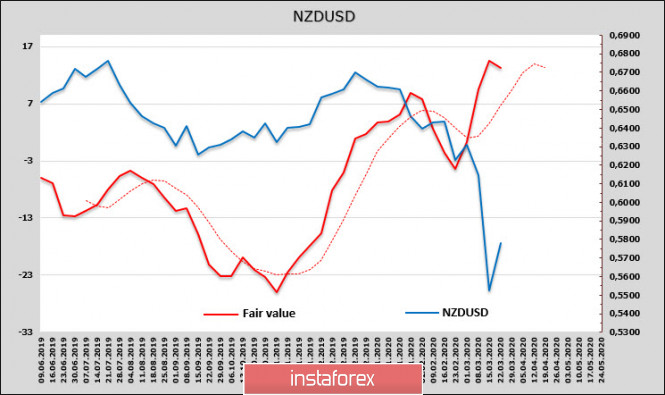Yesterday, the US Federal reserve announced the launch of unlimited quantitative easing, a move that was unimaginable a couple of weeks ago. Bernanke's idea of throwing money from a helicopter finally gets real. If earlier, the FOMC announced that it would buy at least $ 500 billion of treasury securities and at least $ 200 billion of mortgage-backed securities, these intentions have now been transformed into a promise to "purchase treasury securities and mortgage-backed securities of agencies in the amount necessary to ensure uninterrupted functioning of the market." That is, without any visible restrictions.
The Fed is now a direct lender of last resort, not only for the financial system, but also for the real economy – up to 300 billion will be provided to employers, consumers and enterprises in the form of a new financing mechanism. The Ministry of Finance, using the Currency Stabilization Fund (ESF), will provide capital in the amount of 30 billion US dollars. Two mechanisms are also being created to support lending to large employers: the Primary Market Corporate Credit Line (PMCCF) to issue new bonds and loans and the Secondary Corporate Credit Line (SMCCF) to provide liquidity for outstanding corporate bonds. Another mechanism is created for the flow of loans to consumers and enterprises, separately - to provide loans to municipalities, it is planned to launch a lending program "main street" to support small and medium-sized enterprises.

All these measures are taken in addition to previously announced, and not to replace them. As part of the "old QE," the Fed plans to conduct operations totaling about $ 75 billion in Treasury securities and about $ 50 billion from MBS every business day this week.
These are astronomical figures, from which a very unpleasant conclusion follows - the US financial system is on the verge of collapse.
However, one more mechanism remained that the Fed has not yet reached a hand is the direct redemption of commodity futures, primarily oil, in order to support the sales market for manufacturers. Given the fact that the mechanism of payments for oil is international and affects the interests of many countries, such a step can provoke absolutely unpredictable consequences.
NZD/USD
In addition to the actions of the RBNZ, the Government of New Zealand announced the launch of a tax incentive program. Despite this, the government is oriented towards a recession, which cannot be avoided, and plans to prepare a number of additional measures by May.
Everyone expects RBNZ to launch an asset buyback program, which should also start in the very near future.
The CFTC report showed a slight change in demand for NZD, the estimated price is still significantly higher than the spot.

On the other hand, ANZ Bank suggests that, despite all the measures taken, New Zealand's GDP decline may reach 9%. Such gloomy forecasts hinder the recovery of the kiwi in order to return to the level of 0.60. Therefore, it is necessary to wait until the Fed can pump up markets with liquidity and demand for the dollar declines. These restrictions will not allow NZD to develop a full correction. Sales are highly likely to take on a larger scale in the resistance zone 0.5915 / 85.
AUD/USD
The first data for March, as expected, worsened significantly - PMI in the service sector declined from 49p to 39.8p, while composite index from 49p to 40.7p. The RBA launched its own economic support program, bonds worth $ 5 billion were bought back on Friday, the government announced the launch of a package of tax incentives worth $ 56 billion in addition to the previously adopted package of 17.6 billion.
In any case, a reduction in GDP is inevitable. The states of New South Wales and Victoria announced the introduction of quarantine, and we already have a good idea of the quarantine effect on the economy in China, Europe and the USA.
Oddly enough, the estimated fair price continues to grow - unlike other commodity currencies, AUD was in demand last week. CFTC noted a decrease in the total short position by 1.79 billion.

The reason for supporting the Australian currency is unclear, perhaps investors are guided by a faster than expected recovery of China.
Now, AUD/USD is trying to push off the low of March 19 and these attempts may succeed given the direction of the estimated price. The nearest resistance is the level of 0.5985, breaking through above will add to the bulls' arguments. Strong growth in stock markets on Tuesday morning also supports the growth of the Aussie.
The material has been provided by InstaForex Company - www.instaforex.com